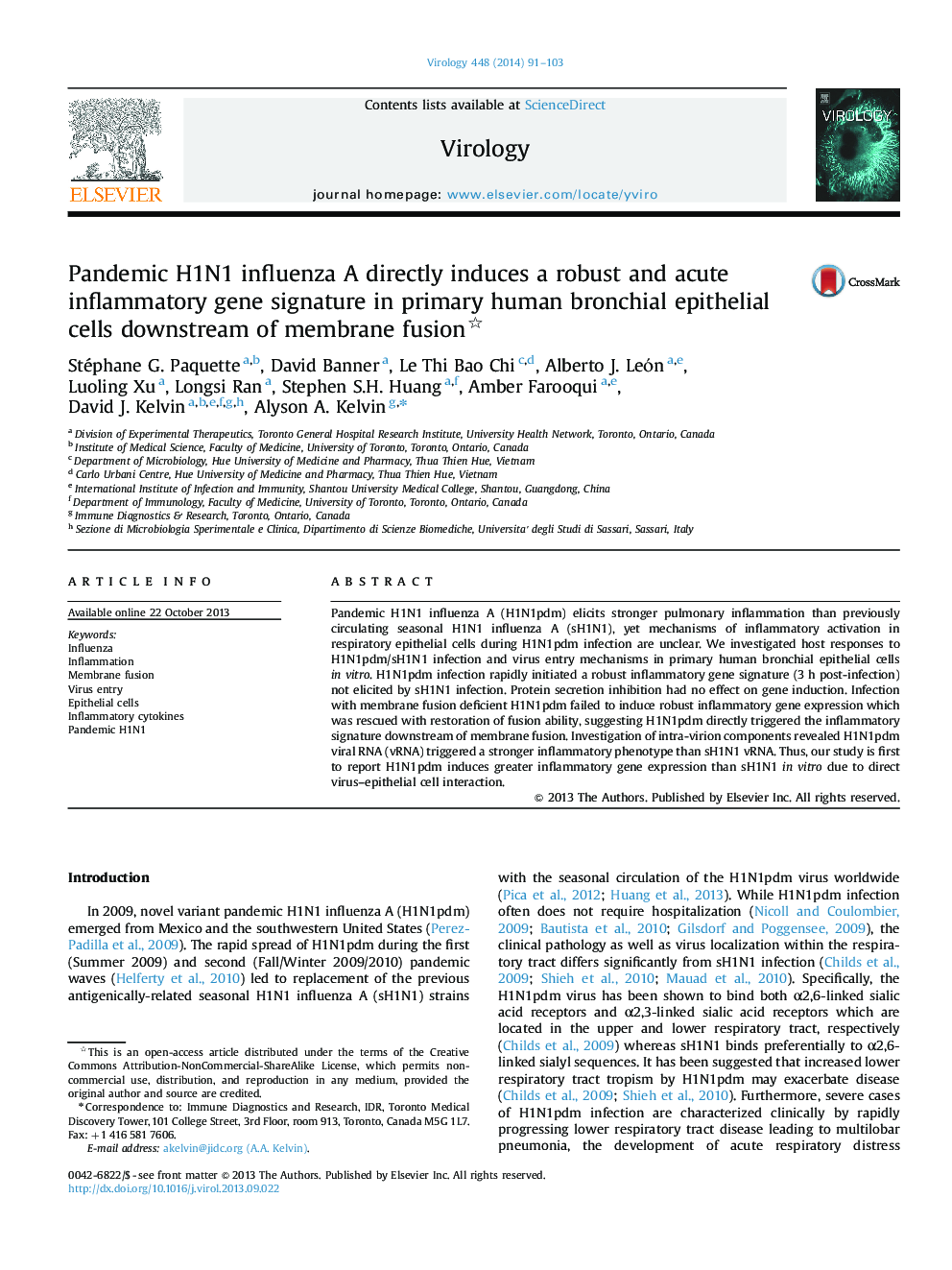| Article ID | Journal | Published Year | Pages | File Type |
|---|---|---|---|---|
| 6140721 | Virology | 2014 | 13 Pages |
Abstract
Pandemic H1N1 influenza A (H1N1pdm) elicits stronger pulmonary inflammation than previously circulating seasonal H1N1 influenza A (sH1N1), yet mechanisms of inflammatory activation in respiratory epithelial cells during H1N1pdm infection are unclear. We investigated host responses to H1N1pdm/sH1N1 infection and virus entry mechanisms in primary human bronchial epithelial cells in vitro. H1N1pdm infection rapidly initiated a robust inflammatory gene signature (3Â h post-infection) not elicited by sH1N1 infection. Protein secretion inhibition had no effect on gene induction. Infection with membrane fusion deficient H1N1pdm failed to induce robust inflammatory gene expression which was rescued with restoration of fusion ability, suggesting H1N1pdm directly triggered the inflammatory signature downstream of membrane fusion. Investigation of intra-virion components revealed H1N1pdm viral RNA (vRNA) triggered a stronger inflammatory phenotype than sH1N1 vRNA. Thus, our study is first to report H1N1pdm induces greater inflammatory gene expression than sH1N1 in vitro due to direct virus-epithelial cell interaction.
Keywords
Related Topics
Life Sciences
Immunology and Microbiology
Virology
Authors
Stéphane G. Paquette, David Banner, Le Thi Bao Chi, Alberto J. LeÏn, Luoling Xu, Longsi Ran, Stephen S.H. Huang, Amber Farooqui, David J. Kelvin, Alyson A. Kelvin,
